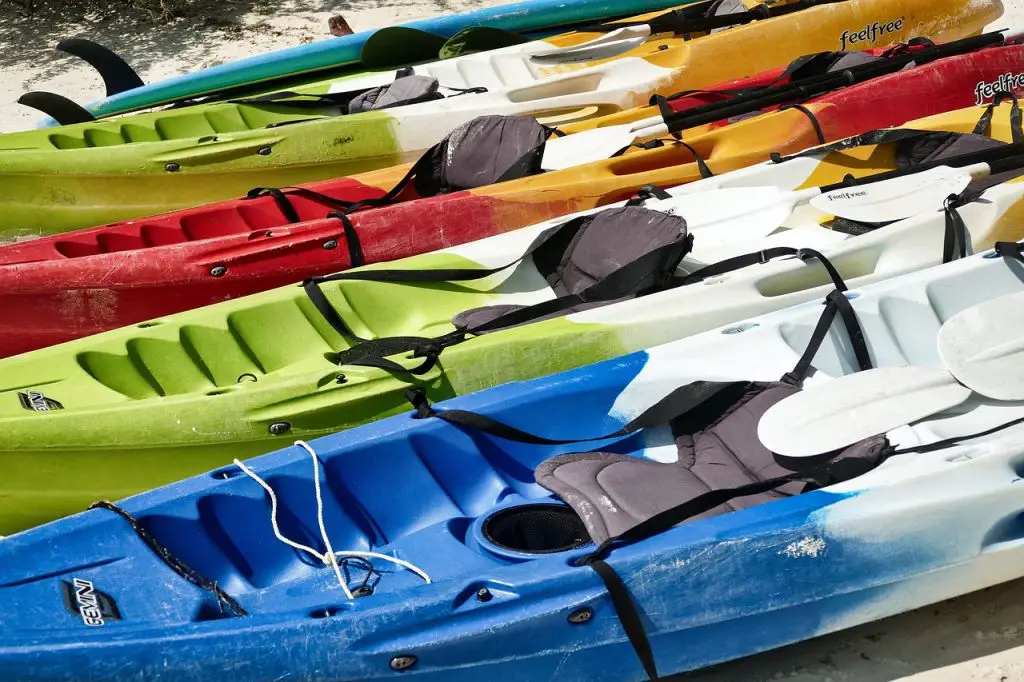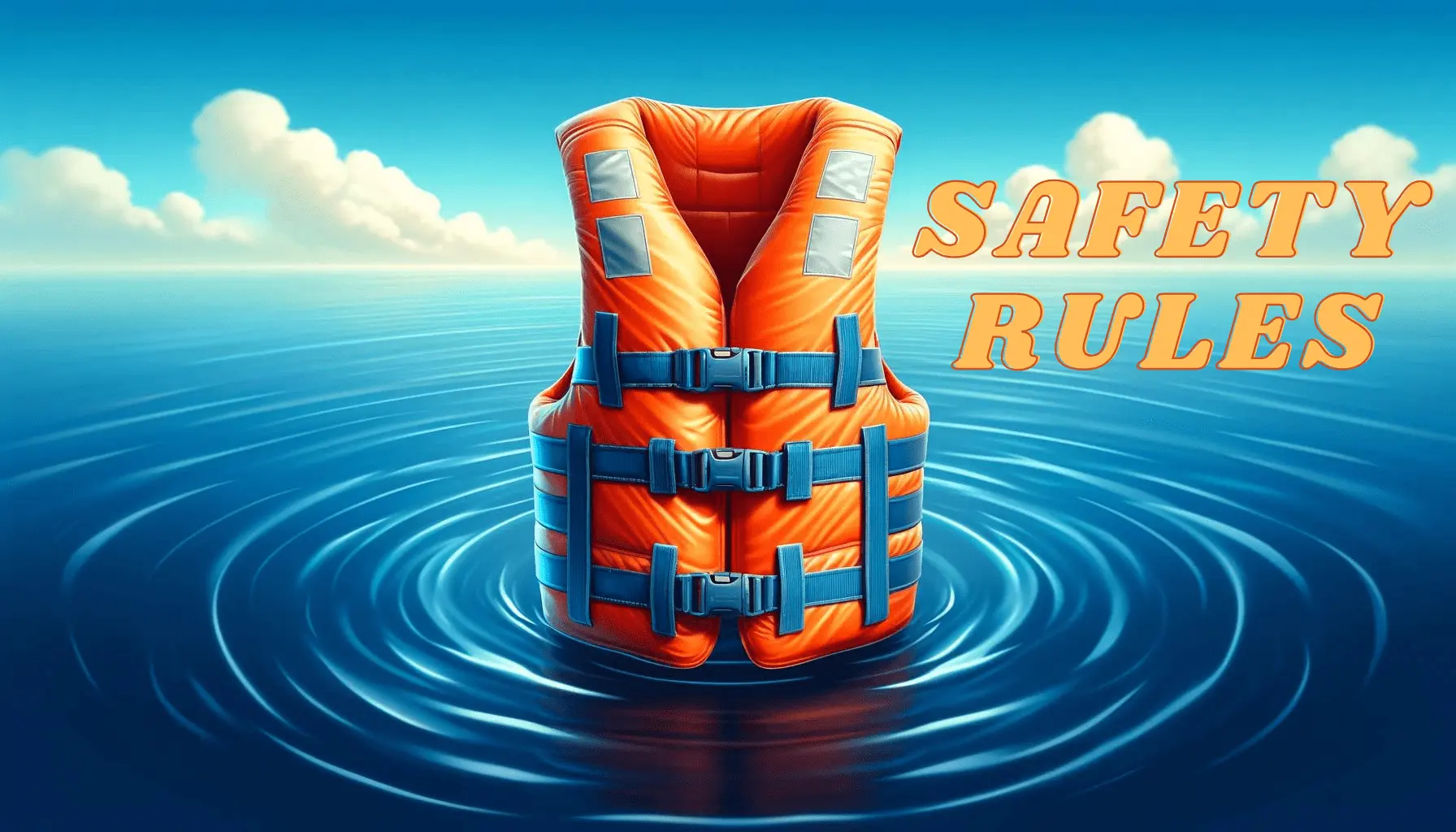There’s a growing dissatisfaction among kayak anglers with the seats that come with the kayaks they purchase or with third-party seats available on the market.
And having a comfortable kayak seat is essential for long-distance trips.
As such, paddlers are turning to DIY kayak seat installations to improve their comfort. Some are turning to the humble stadium seat to solve their needs.
Does it mean you just go out and buy one? Well, you could, but you need to know why to even modify your seat.
The most important point is to understand what you need to improve on, such as getting wet in a kayak, having back pain, or having better spine support.
Whatever it is, I can help you figure out what you need.

How To Build A DIY Kayak Seat
People are turning to DIY kayak seat solutions instead of purchasing from the numerous options of kayak seats out there due to two factors.
First, kayak seats are directly on the hull of the kayak, and second, third-party seats don’t provide enough advantages to continue to use them.
Instead, people are installing their own builds on the kayak to remain dry and see into the water better, which is important for kayak fishing.
Now, of course, these requirements are mostly for kayak fishing.
To build your own seat, you will need to find a seat that is comfortable, sturdy, has lumbar support, and fits the dimensions of your kayak.
What Items And Tools We Need

The tools that you will need are the following:
- A drill, 1/8″ drill bit and a screwdriver. If you decide to use screws to mount the seat, it is best to use a drill to make holes at the mounting point. The size of the screws will also dictate the size of the drill bit.
- Conduit clamps and stainless steel screws. Again, the size and type depends on the clamp size and what is best to hold them to the kayak hull.
- Stadium seat. If you haven’t found another option, this is a proven option that many have turned to and works.
- Pliers. You may need them to hold materials in place while you work on them.
- Measuring tape. You will need to make several measurements as you figure out how to mount the seat to the kayak.
- Marker. You will need to make marks for where you need to drill or cut.
- Foam padding. You may need extra padding for comfort for either the seat or the back rest or both.
- Adhesive spray. This will come in handy to glue pieces of foam to fabric or to other foam pieces.
This is a cheap DIY solution that requires drilling into the hull of the kayak around the seat area. But there’s no need to worry too much about putting holes here, as there is also a solution to prevent water from pouring into the kayak.
Safety Precautions
There are several safety precautions to take before making a DIY kayak seat.
First, you will want to make sure the area you work in is safe for you and other people to be in, as well as for disposing of waste for environmental sustainability.
If the drill doesn’t have variable speed capability, use a screwdriver for the screws. This is to avoid stripping the threading with too much turning force.
Pre-drilling a hole smaller than the screw will minimize distortion and the danger of breaking the kayak hull.
It is also advisable to wear gloves for safety reasons.
Step-By-Step Instructions For Making A DIY Kayak Seat
For these instructions, I will cover the stadium seat and the conduit clamp method on a sit-on-top kayak example.
First, you need to “eyeball” where it will sit on the kayak. Then, you will install the seat with whatever technique is appropriate and test it until you are happy with it.
This includes cushioning for your butt and lumbar support on the back rest, as well as other things.
Step 1: Line Up The New Seat To Your Preferred Seating Position

Now that you have your preferred seat, whether a stadium seat or something similar, you will need to find the ideal position for your new seat.
You will need to measure the sitting area on the kayak and adjust accordingly.
You can do this with the seat itself or a mixture of recorded measurements. I advise you to use the seat as you can estimate where the seat will be mounted.
When you decide where to mount the seat, mark the spots where the screws will go with a marker.
Step 2: Clamp The Seat Close To The Rod Holes
Once the seat is lined up, you will need to temporarily tack it to the kayak to see if it fits. Depending on your weight, you may need to build extra support for the seat with wood or another material.
If you need extra support, you need to find a lightweight solution. It can be an aluminum or steel bar to provide the support.
However, wood works fine as it has buoyant attributes. A two by four plank could be cut in the shape of the gap, or strips could be used to support the gap between the bottom of the seat and the hull.
The support piece is not a requirement but is based on your preferences or judgment.
Step 3: Pre-Attach The Conduit Clamps Stadium Seat
The conduit clamps need to be attached to horizontal bars at the bottom of the seat. The preferred fit for the clamps is that they are tight.
Conduit clamps come in various sizes, it is important to use one that expands slightly to match the stadium seats pipe size.
This tight fit will prevent the seat from sliding side-to-side when you eventually bolt down the seat.
Step 4: Mark The Clamp Holes Where They Align With The Kayak With A Marker
Once the clamps are in place on the seat, you can mark the spots to drill into the kayak.
This may seem simple, but you have to be careful to make sure that the marks are consistent. This means that you will have to ensure the seat does not move when you mark one clamp.
If it does move, the clamps will not align, and you could make a mess of the final position of the seat.
Step 5: Pre-Drill The Holes In The Kayak
You can remove the seat to see and have space to safely drill the holes. Make certain that all precautions are followed during the drilling.
For example, the drill should be 90 degrees perpendicular to the hull’s surface. This will allow all the holes to have the right threading to fasten screws in.
Watch your fingers as you guide the drill bit to be on your mark spot, etc.
Step 6: Fix The Seat In Place And Screw It In Place
With the holes made, line up the seat with the clamps and screw the seat down. You can use either a screwdriver or screwdriver bit on a drill.
Use whichever is most comfortable. Make sure not to strip the threading.
Here, you have a few options. You can do a dry fit to see if it all lines up then proceed to finally fasten the seat in place and add silicone around the holes.
Or you can use a rubber washer to cover the holes when you screw the seat to the hull.
Step 7: Test The Seat

Now, you should have a seat fixed perfectly. Or maybe not. You should test the seat for fit, sitting height, and comfort.
You might want to actually test it on a super short paddling trip. Your first test should be short to check the comfort and then make adjustments if necessary.
After you have made any required adjustments, you can take your kayak on a short trip to test if paddling for longer than thirty minutes is comfortable.
Step 8: Final Touches
When you’ve fitted your DIY kayak seat and tested it for comfort, add any finishing touches to make it even more comfortable. You can add more padding or change the height of the seat.
Essentially, the entire aim of a DIY kayak seat is to be more comfortable and prevent any long-term injuries.
So, be as particular as possible with the materials and the quality of construction you apply.
Also, below you can watch a video and get a simple idea of how to make a DIY kayak seat.
Tips For This DIY Kayak Seat
I will now cover some valuable tips for making a DIY kayak seat.
When you test the seat, look specifically for balance and paddling. You will find that you have to use a longer paddle because your sitting position has changed.
In terms of balance and stability, they may be compromised, but there are solutions to help you regain stability.
There are advantages to sitting higher in the kayak, but there are also disadvantages.
If you are concerned about water pouring through the screw threads, squeeze some transparent silicone on the threads before screwing the seat down.
Some seats you buy come with lumbar support, a seat cushion, and a pillow. You will also need to think about how to support your butt and lower back.
Upgrade Your Kayak Seat (DIY)
So, now we know how to make a DIY kayak seat, but what if the existing seat that we have is not so bad and only needs slight modifications?
Yes, you can upgrade your existing seat. However, upgrades are based on your needs. You may need a taller backrest, or more padding for your butt, or better lumbar support, or a better sitting position, etc.
We will discuss improving the padding for your butt and lumbar support.
To upgrade your seat for better butt and thigh comfort, you can buy a piece of foam with a thickness greater than 3 inches (7 cm). This should be closed cell foam because of its ability to be shaped.
Out of this foam, you will carve a groove shaped to fit your butt and your glutes. So, when you sit on this foam, which is on top of the seat, you can have extra comfort as you go paddling for hours.
What Items And Tools We Need
Let’s see the other materials we need to use to improve your sitting experience on a kayak.
- Foam: this material is cheap and readily available. If you choose foam it can be the key material to upgrade your seat. You can use closed cell or polyurethane foam. Closed cell tends to be more expensive but retains its shape better and longer while polyurethane is cheaper and is used for things.
- A sharp knife: you will need a very sharp knife to cut and shape the foam.
- Gloves: you will need some kind of latex gloves to protect your hands from any glue or other harmful substances.
- A strong glue: you may need a strong glue if you need to join things together.
- Tape: tape can either hold things in place temporarily or act as finishing for an object.
- Fabric: this is an optional material for covering your seat. It can be a nice touch as it can be removable and washed.
Step-By-Step Instructions For Upgrading Your Kayak Seat
Next, we’ll go through how to upgrade the kayak seat step by step.
Step 1: Assess The Area That Needs Improvement
When assessing your needs, take note of the pain points on your body. If you have thigh, leg, or knee pain from paddling, you might want to change the height of your sitting position.
More room for your legs can remedy this situation. If hip pain or your lower back hurts after paddling, then you will want more cushion for your butt and better lumbar support for your lower back pain.
Step 2: Measure The Gaps
Depending on the areas you identified for your needs, go ahead and measure the spot that needs extra support in your seat.
Step 3: Cut Or Shape The Support
Once you figure out the material and shape of the piece you need for seat support, you may use one block of foam or several pieces to make the seat support, similar to how pillows are made.
Next, once you have shaped the support piece, you may need to glue several pieces together. Tape will come in handy to hold the pieces together while the adhesive dries.
Step 4: Test And Fit
The most important part of upgrading your seat is to be comfortable while paddling. Therefore, you have to test in between each stage to see how comfortable it is.
Step 5: Finalize And Finish
To finish the piece, you will either use fabric or tape. Essentially, the piece will need a covering over it to protect it.
Fabric has the most advantages because the fabric extends the use of the piece.
A fabric cover can be removed and washed repeatedly, while a taped over of foam piece may disintegrate once the tape falls off after several uses. It can be attached to the seat with a string, rope, or velcro.
Also, below you can watch a video and get a simple idea of how you can upgrade your kayak seat.
Summary
Making a DIY kayak seat or upgrading one is easy and can improve kayak seat comfort while paddling.
However, you will need to discover the best way for you to balance stability, comfort, and power.
The stadium seat DIY installation example allows you to sit in an elevated position for maximum back comfort as well as other advantages of seeing the water from a clearer position.
Other factors in maintaining comfort with a new seat are your foot and knee positions. You may or may not need foot braces to find the best position.
The most important factors in changing kayak seating are comfort and balance because they also affect your paddling.
Remember that your exact needs may not be addressed, but the guide has enough flexibility for you to add your own methods to the kayak seat modification project.
Enjoy your adventures!



